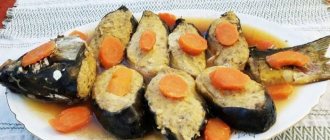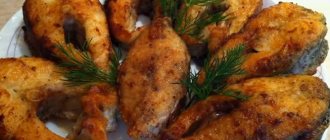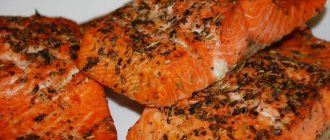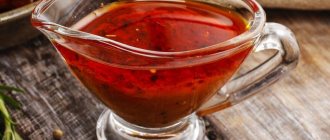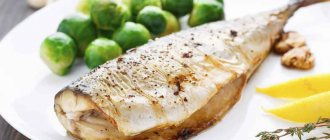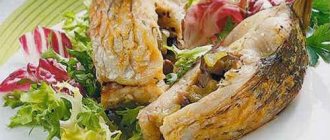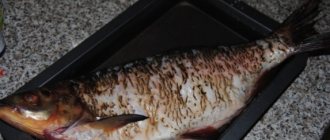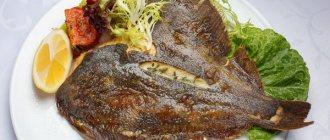Beneficial features
As a rule, river fish contains no more than 8 percent fat. This helps fight obesity as well as atherosclerosis. Constant consumption of fish meat helps to normalize the functioning of the cardiovascular system, and also helps to strengthen the immune functions of the body. A fried dish made from sea fish contains about 160 kcal, and 100 grams of product contains about 20 g of protein, 8 g of fat and up to 5 grams of carbohydrates. Fried fish goes well with any type of side dishes prepared on the basis of potatoes, rice, vegetable salads, seasoned with creamy or tomato sauces.
How to choose the right river fish
The quality of the prepared dish directly depends on the quality of the original product. That's why:
- You can simply smell the fish, as a result there should not be a sharp unpleasant aroma, and the fish should give off a slight aroma of mud.
- The scales should look fresh, not dry or cracked. In addition, if the fish has a bent tail, then it has most likely been lying on the counter for a long time.
- Cloudy eyes and dark-colored gills indicate that the fish is not fresh.
- You should buy uncut fish, as this is the only way to determine its freshness.
Pros and cons of river fish
The main advantage of river fish compared to its sea relatives is that it contains many vitamins and minerals, is low in calories and is easily digestible. If prepared correctly, it will become a real delicacy that can even be served on a holiday table.
The main disadvantage can be considered the presence of small bones, which are very difficult to get rid of. Also, some types of river fish have an unpleasant smell of mud. But it can be easily eliminated using various methods:
- It is necessary to pour lemon juice over the carcass before heat treatment.
- Soaking in a strong saline solution or a mixture of water and vinegar will help.
- Some chefs prefer to remove the skin from the fish, after which the flesh turns out to be very tender and soft.
Preparatory operations
To prepare a fish dish, you will have to prepare it. If using frozen fish,
then it must be properly defrosted, otherwise it will lose the structure of its fibers. To properly defrost fish, you need to take cold water, at the rate of 2 liters of water per 1 kilogram of fish. In this case, the defrosting process takes a certain period of time. As a rule, the fish is poured with cold water in the evening, and by the morning it will defrost.
On a note! Hot water will easily speed up the defrosting process, but will spoil the product.
After defrosting, they begin to clean the fish from scales and get rid of its entrails. The fish can be cleaned very well with a metal brush under running water. It is better to immediately take kitchen scissors and cut off the fins. If the fish is too slippery, you can rub it with salt. After removing the scales, they begin to remove the entrails. It is very important at this stage not to hurt the gallbladder.
If there are no problems, then the insides of the fish are quickly rubbed with salt and washed under running water.
The main task of the cook is to ensure that the prepared dish does not have a specific fishy smell. To solve a similar problem, fish carcasses are soaked in milk, at the rate of 1 kg of product per 1 liter of milk. After filling the fish with milk, leave it for a couple of hours, which is enough for the fish meat to become tender and soft. After this, the fish is thoroughly washed with water to get rid of the taste and aroma of milk.
How to fry fish. We fry river fish, crucian carp, perch, roach, etc.
Preparing river fish for cooking
First of all, it is necessary to carefully select the fish. The carcass should be:
- elastic and dense;
- with eyes that are not cloudy in color;
- with smooth and shiny scales;
- gills light pink or red;
- elastic and moist tail.
When selected specimens are on the table, they need to be properly cut and prepared for heat treatment. The fish is cleaned and gutted. The following method will help you easily clean the scales: you need to immerse the fish in boiling water for just a couple of seconds and scrape off the unnecessary parts with a knife. The second option would be to rub the carcass with salt, then the fish will not slip out of your hands and it can be quickly cleaned.
An important point is to remove the gallbladder; it is removed carefully without damaging it. All entrails are also cleaned from the carcass, and the gills are removed. Afterwards the fish is washed well under running water.
If the fish is too bony, you can grind it into minced meat without separating it from the bones. Prepare fish cutlets.
River fish goes well with many herbs. The best duet is dill, rosemary or mint.
Spicy breaded fish
The following components will be required:
- Up to 1 kg of fish.
- A couple of limes.
- About 15 g of salt.
- About 30 g of a mixture of dill, dried garlic, parsley and basil.
- Approximately 200 g of flour.
- The same amount of rye crackers.
- Sesame oil – within 50 ml.
- A pair of chicken eggs.
To cook fish you will need breading, otherwise the fish will stick to the base of the pan and lose its presentation. To prepare the breading, you need to take a deep bowl and beat the eggs in it until foam forms, and combine the crackers and spices in a separate plate. Then take a flat, shallow plate and pour the sifted flour into it. Half an hour before cooking, take 1 liter of water and add lime juice and salt, after which the fish is placed in this solution (marinade).
Small fish are cooked whole, and large fish are cut into portions. Heat a frying pan with sesame oil, and the oil should cover the fish halfway. First, the fish should be dredged in flour, then it is dipped in beaten eggs, and then in a breading with spices. The fish is fried for 5 minutes on each side, after which it is laid out on a paper towel to remove excess oil. Serve cooked fish hot, with herbs and vegetables. Preparing such a dish will take a little time, but its taste will delight all family members and guests.
Fish
-30 %
Bodum Barcelona fish knife, matte chrome
439i 629i
Are available
When boiling fish, the water should be salted more abundantly than when boiling meat and other products. If you are frying fish and your specimen is a tender, watery fish, one that could use some firmness, then salt it an hour before frying. This way it will become a little denser and there will be less chance that it will fall apart and turn into a fishy mess during the cooking process. And even if you are going to fry or stew fish that is not watery, it is still better to salt it not during the process, but before cooking: 10-15 minutes before. When baking in the oven, it will take a little less time - you can add salt in 5-7 minutes. This way it will keep its shape better.
Fish in batter
Preparation will require the following components:
- Up to half a kilogram of fish.
- Up to 100 ml soy sauce.
- 3 cloves.
- Up to 20 g ginger.
- A little salt, dried fennel and dill.
- Four chicken eggs.
- Oatmeal - within a glass.
The cooking process requires marinating the fish, for which soy sauce is taken and heated in a water bath to 50 degrees, with the addition of cloves and chopped ginger. The marinade is removed from the heat and added to the fish. The fish should be marinated for half an hour. During this time you can
prepare the batter. To do this, beat eggs with the addition of salt and dried herbs. After this, the fish is removed from the marinade and dried on a towel. Before cooking, the fish is dipped in batter and then in flour. You can use any type of flour, but the result will be more calories in the prepared dish. The fish pieces are dipped again (2nd time) into the batter and placed in a heated frying pan. If you replace vegetable oil with butter, this will only improve the taste of the dish.
Fried catfish
To prepare catfish you need to stock up on the following ingredients:
- About 800 g of catfish.
- Half a liter of white wine.
- Olive oil – 50 ml.
- One orange.
- Salt – about 15 grams.
- Rusks - about 100 grams.
- Dry garlic – within 5 grams.
- Four eggs (chicken).
Catfish will be especially tasty if it is marinated in a special marinade. You will have to marinate for at least half an hour so that the fish gets rid of its characteristic river aftertaste. The fish is poured with white wine and orange juice, with the addition of salt. While the fish is marinating, you can prepare the batter by beating, salting and peppering the eggs. The crackers are mixed with dried garlic (fresh garlic gives a bitter taste). The frying pan is placed on the fire and heated together with the oil. The catfish is first placed in batter and then in breading. After this, the pieces of fish are carefully laid out in a frying pan and cooked for 7 minutes on each side. Once cooked, place the fish on a paper towel to remove excess oil. Potato or pumpkin puree, as well as fresh vegetables, are suitable as a side dish for the dish. The fish is also decorated with greens.
We'll tell you and teach you
Why do some people turn out fried fish aromatic, tender and juicy, with an appetizing crispy crust, while others turn out tasteless and falling apart?
Fish selection
You can fry almost all types of fish. However, not every one will remain juicy and fatty after frying.
Delicious recipe! Film about Kesem Sultan
The fact is that many representatives of the marine fish family have low-fat meat, and therefore, after cooking in a frying pan, it becomes dry and tasteless.
It is not recommended to use low-fat sea fish for frying: cod, hake, flounder, blue whiting, navaga, pollock and sea bass. It is better to bake them in foil, steam them, stew them or pickle them.
Horse mackerel, saury, mackerel, halibut, herring, sprat, ivashi, horse mackerel, pink salmon and tuna, which are fatty and moderately fatty varieties of sea fish, are best suited for cooking by frying.
In most cases, river fish always has an excellent degree of fat content and juiciness when fried. Crucian carp, carp, catfish, trout and salmon are especially recommended for frying.
The list of fish outlined above is not prescriptive, these are just recommendations; for cooking in a frying pan, you are free to choose the fish at your discretion.
Preparatory work
First of all, scale the fish, trim off the fins, cut along the belly line and gut it. For large fish, it is recommended to trim the tail and head.
The best way to remove mucus from the surface of fish skin is to thoroughly rub it with salt, and then wash it thoroughly.
Cut large and thick fish into pieces about 3 cm thick - this way they will fry evenly and have the same degree of doneness. Small fish can be fried whole.
If you want to fry a medium-sized fish whole without cutting it into portions, you can avoid its deformation during cooking by making shallow transverse cuts on both sides.
In this case, the fish skin, which almost always shrinks and decreases in size during heat treatment, will not be able to change the original shape of the fish carcass.
Delicious recipe! How to make sauerkraut in the old days
To get rid of the specific swampy smell of river fish, soak it in milk with salt and pepper 15-20 minutes before frying.
Approximate ratio of ingredients: 1 glass of milk, 1 teaspoon of salt and 1/3 teaspoon of pepper.
Another recipe for an “anti-swamp” solution is 1 glass of cold water and 1 teaspoon of vinegar. After removing from the solution, let the fish drain by placing it in a colander, and then dry it with a paper towel.
Many people argue about when to salt fish. If you soaked it in an “anti-swamp” solution, there is no need to salt it.
If the fish has not been pre-soaked, it should be salted 15 minutes before cooking.
Due to the fact that salt promotes the release of juices, fish that is salted long before frying will fall apart during cooking.
Fish roe fried in a frying pan
Using the same technology, you can cook not only fish, but also its caviar in a frying pan. Naturally, mature caviar is more suitable for this, as it has no clouding and the eggs are clearly visible. Before cooking, the caviar is washed well with water, separated from the film. After this, the caviar is salted and peppered, without excess spices, so as not to overshadow the natural taste of the product.
For frying you will need:
- Up to 100 g of caviar.
- About 30 g of wheat (any) flour.
- Up to 20 ml of vegetable oil.
Caviar is prepared with the addition of flour in a frying pan heated with vegetable oil. This product takes no longer than 3 minutes to cook on each side. It is better to turn over carefully so as not to damage the integrity of the product. The ready-to-eat dish should have a beautiful, appetizing golden hue. This dish contains about 230 kcal, regardless of the type of fish.
If you follow these simple tips, you can cook river fish in a frying pan with a crispy, delicious crust. The product is considered low in calories, but rich in taste, which is sure to please anyone who wants to try these dishes.
Frying bony river fish or how to get rid of small bones
How to fry fish in a frying pan in flour?
People often avoid cooking fish for many reasons, including fear of an unpleasant smell in the apartment. But the main reason why people do not dare to undertake a culinary experiment is that many do not know how to fry fish in a frying pan in flour. This is especially true for fillets, because they are very tender.
Heat a frying pan and wait until the oil gets hot. It is advisable to sprinkle a few drops of water into it - if the contents of the container begin to hiss and splash, you can start cooking. Place the fish in the pan. It is advisable to prepare the “front” surface first. Usually the skinless side is assumed. Once your fish is in the pan, gently adjust it with a wooden spatula to prevent sticking.
